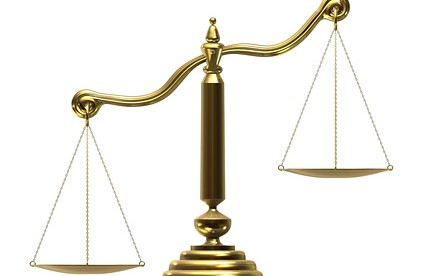The Different Coin

It’s Columbus Day and I’m taking it off, kind of. On Friday, I shared the following puzzle. Today, I’m back with the answer.
But first, a reader suggested a book for those who are interested in math puzzles — I haven’t had a chance to check it out yet, but it’s called “The Moscow Puzzles: 359 Mathematical Recreations” and as of 4.5 stars on over 150 reviews on Amazon as of this writing. You can check it out here.
Now, the puzzle.

The Different Coin
You have a balance and twelve coins, one of which weighs a different amount than the rest, but you don’t know which one it is — and you don’t know if the different coin is heavier or lighter than the rest. Using just 3 weighings on the balance, can you identify which coin is the odd one out (and whether it’s heavier or lighter)?
The full solution is pages and pages long — flow charts and the like. A reader sent in a great mnemonic device which I’ll share at the end of today’s email, but first, let’s talk about what makes this problem difficult — and a framework for solving this.
(After this Patreon message, that is.)
Now I Know is supported by readers like you. Please consider becoming a patron by supporting the project on Patreon. Click here to pledge your support.
The reason why this problem is difficult is because the first weighing doesn’t tell you all that much. If you put all twelve coins on the scale — six on one side, six on the other — the scale is going to tilt. But you’ll not be able to eliminate any of the coins. You’ll need to find other ways to eliminate coins (or, I guess, to identify which ones are “normals,” let’s say.)
There are three things you have to keep in mind:
- If a coin goes up in one weighing and down in another, it’s not the coin you’re looking for.
- You’re may need to test an odd amount of coins, so you’ll need to add in a coin of known weight (that is, one that’s already been identified as one of the 11 normals) at some point. (As it turns out, you’ll always need to test an odd amount of coins at one point or another, making this critical.)
- The first weighing isn’t about eliminating coins. It’s about collecting information. The second is similar, but more importantly, the second weighing is about getting down to no more than three choices left and knowing something about each of those choices.
Let’s arbitrarily label all the coins. 1 through 9 works for most, and let’s use T, J, and Q for ten, eleven, and twelve. (That’s Ten, Jack, Queen, if you want to know why I chose those letters.) And, let’s say that the 6 coin is the odd coin out and you’ll see what I mean.
Put coins 1-2-3-4 on one side of the balance and coins 5-6-7-8 on the other, keeping 9-T-J-Q in reserve for our first weighing. The 1-2-3-4 side goes up and the 5-6-7-8 side goes down. So we know that, if the odd coin is one of the 1-2-3-4, it’s lighter than the rest; and if the odd coin is in the 5-6-7-8 group, it’s heavier than the rest. The 9-T-J-Q? All normals.
Second weighing: Put 1-2-5 on the left. On the right, put 3-6-Q. Note that the 4, 7, and 8 aren’t being tested again and the Q is being used as a placeholder, to make sure the scale can balance in case the 4, 7, or 8 are the odd duck. The right side goes down again, meaning that if the coin is the 1, 2, or 5, it’s lighter than the rest; or if it’s the 3, 6, or Q, it’s heavier. We can remove the Q from the solution set because it’s already been proven to be a normal coin from the first weighing. We can also remove the 3 and 5 because they tilted down in one weighing and up in the other. A coin can’t be both heavy and light, so both are normals.
That leaves us with coins 1, 2, and 6. We know if the answer is 1 or 2, it’s because it’s too light. We know if the answer is 6, it’s because it’s too heavy. Our third weighing: 1 versus 2. If it tips, whichever side goes up is the mystery coin. If it stays balanced, the mystery coin is the too-heavy 6. That’s what happens and we’ve identified our coin.
Let’s do this again, starting with step 2, but this time, let’s make the 4 coin lighter than the other eleven. To recap, the 4 was on the left side of the balance for the first weighing but not on the balance at all for the second. So this time, the balance stays level on the second weighing. We now know that our mystery coin is one of the 4, 7, and 8. If the answer is 7 or 8, it’s because the coin is too heavy, so we weight 7 versus 8. Had it tipped, whichever side goes down contains the maladjusted coin. Otherwise, the balance will stay level and the 4 is our answer.
You can try other permutations if you’d like. The biggest trick is to make sure you use a dummy coin in the second weighing to make sure that the third weighing has only three options, max, to test.
* * *
That’s really complicated, though, so here’s a simple solution — one without the reasoning attached, but it’s really neat. Thanks to reader Martin (“The Hypnotist Who Doesn’t Use Hypnosis“) for sending this in; I hadn’t seen it before.
Letter the coins with the letters of the phrase F AM NOT LICKED.
Then you can determine the fake by the sentence MA DO LIKE ME TO FIND FAKE COIN.
MA DO – LIKE
ME TO – FIND
FAKE – COINIn other words, weigh MADO against LIKE, then METO against FIND, and FAKE against COIN.
This will always show you which is the odd one, and whether it’s heavier or lighter. It’s by far the simplest and most memorable solution I’ve come across.
Give it a try — it should work.
I’ll be back tomorrow with a regular Now I Know. Thanks!
WeekenderAdUnits

